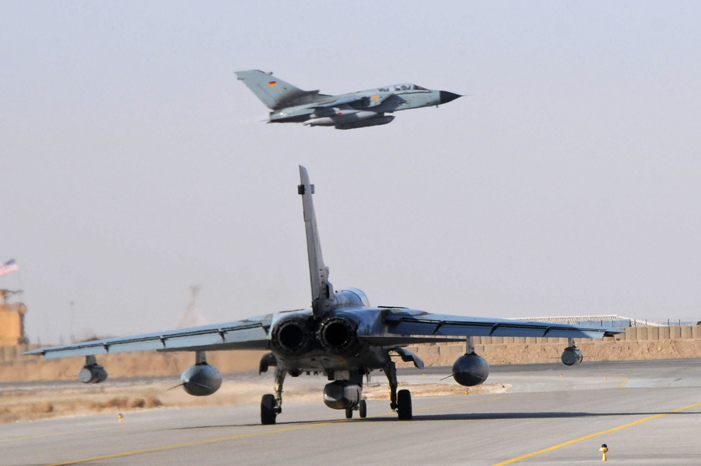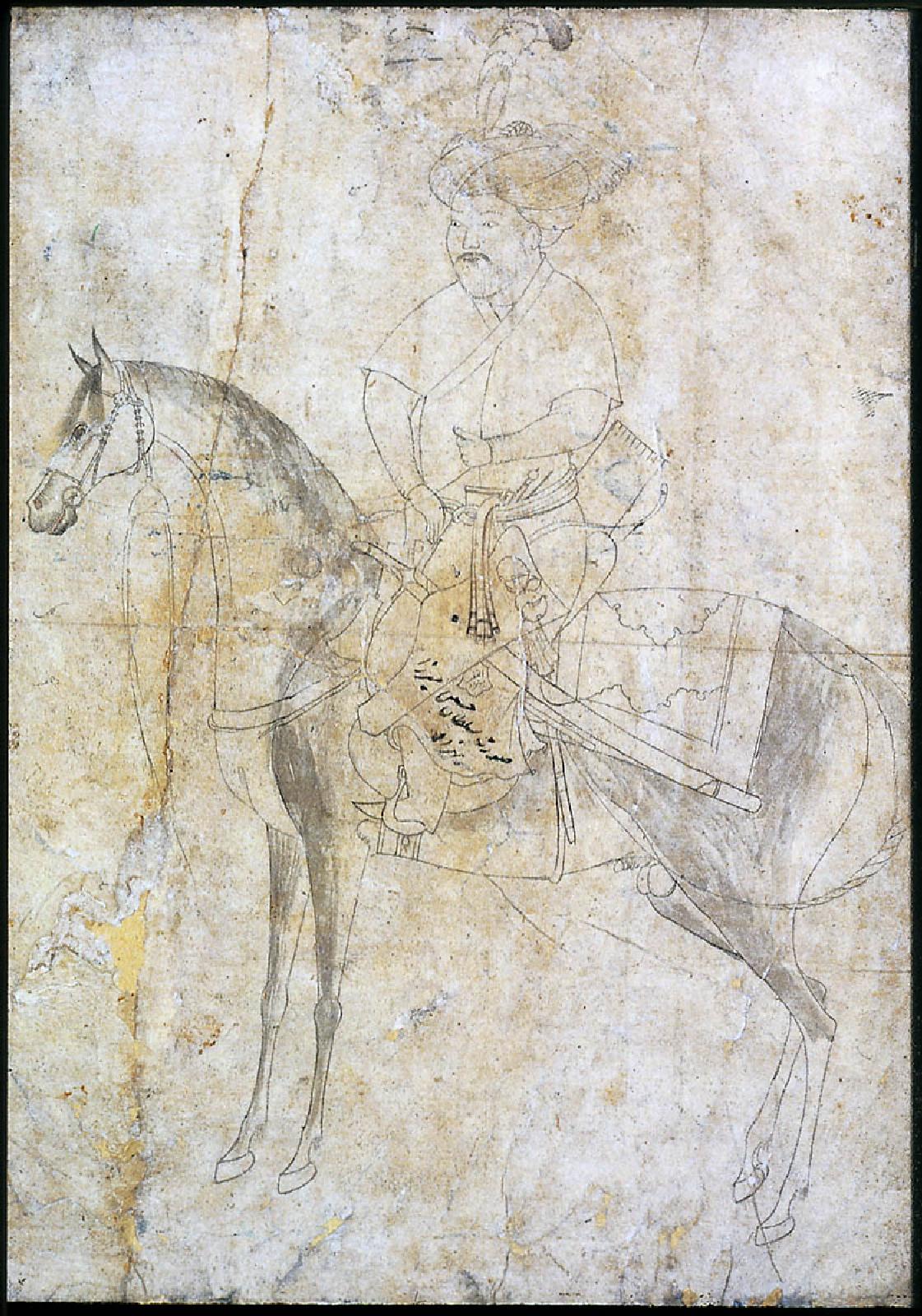|
Blue Mosque (Mazar-i-Sharif)
The Mausoleum of Ali () or Blue Mosque (مسجد کبود), located in Mazar-i-Sharif, Afghanistan, is a shrine purportedly housing the tomb of Caliph Ali, the first Imam of Shia Muslims (). Many pilgrims annually celebrate Nowruz at the site. At the annual Jahenda Bala ceremony a flag is raised in honour of Alī. People touch the flag for supposed luck in the New Year. History The earliest surviving source stating Ali to be buried in Balkh is of the Andalusian traveller Abu Hamid al-Gharnati (). Abd al-Ghafur Lari wrote that Muhammad al-Baqir, the fifth Shia imam, assigned Abu Muslim the task of transferring Ali's body to the Khurasan, though this is likely apocryphal. The first structure of the site dates back to the Seljuk era. It was built by Sultan Ahmad Sanjar in the 11th century. In the 13th century, the Mongols under Genghis Khan invaded Balkh, where they massacred the Balkhi population and destroyed their places of worship. The mosque built by Sanjar was destroye ... [...More Info...] [...Related Items...] OR: [Wikipedia] [Google] [Baidu] |
Mazar, Afghanistan
Mazar-i-Sharīf ( ; Dari and ), also known as Mazar-e Sharīf or simply Mazar, is the fifth-largest city in Afghanistan by population, with the estimates varying from 500,000-680,000. It is the capital of Balkh province and is linked by highways with Kunduz in the east, Kabul in the southeast, Herat in the southwest and Termez, Uzbekistan in the north. It is about from the Uzbek border. The city is also a tourist attraction because of its famous shrines as well as the Islamic and Hellenistic archeological sites. The ancient city of Balkh is also nearby. The region around Mazar-i-Sharif has been historically part of Greater Khorasan and was controlled by the Tahirids followed by the Saffarids, Samanids, Ghaznavids, Ghurids, Ilkhanids, Timurids, and Khanate of Bukhara until 1751 when it became part of the Durrani Empire (although under autonomous emirs). Eventually the city passed to a few local rulers before becoming part of Afghanistan in 1849. Mazar-i-Sharif is the regional h ... [...More Info...] [...Related Items...] OR: [Wikipedia] [Google] [Baidu] |
Sultan Husayn Bayqara
Sultan Husayn Bayqara Mirza ( ''Husayn Bāyqarā''; June/July 1438 – 4 May 1506) was the Timurid dynasty, Timurid ruler of Herat from 1469 until May 4, 1506, with a brief interruption in 1470. A skilled statesman, Sultan Husayn Bayqara was best known for his interest in the arts and was renowned as a benefactor and patron of learning in his kingdom, with his reign being heralded as the second Timurid Renaissance. He has been described as "the quintessential Timurid ruler of the later period in Transoxiana" and his sophisticated court and generous artistic patronage was a source of admiration, particularly from his cousin, the Mughal Empire, Mughal emperor Babur. Sultan Husayn Bayqara was the last Timurid ruler of consequence in Greater Khorasan, Khorasan. Early life and lineage Born in Herat in June or July 1438, Husayn Bayqara's parents were Ghiyas ud-din Mansur Mirza of the Turco-Mongol tradition, Turco-Mongol Barlas tribe and his wife, Firuza Sultan Begum. His parents ha ... [...More Info...] [...Related Items...] OR: [Wikipedia] [Google] [Baidu] |
Buildings And Structures In Balkh Province
A building or edifice is an enclosed structure with a roof, walls and windows, usually standing permanently in one place, such as a house or factory. Buildings come in a variety of sizes, shapes, and functions, and have been adapted throughout history for numerous factors, from building materials available, to weather conditions, land prices, ground conditions, specific uses, prestige, and aesthetic reasons. To better understand the concept, see ''Nonbuilding structure'' for contrast. Buildings serve several societal needs – occupancy, primarily as shelter from weather, security, living space, privacy, to store belongings, and to comfortably live and work. A building as a shelter represents a physical separation of the human habitat (a place of comfort and safety) from the ''outside'' (a place that may be harsh and harmful at times). buildings have been objects or canvasses of much artistic expression. In recent years, interest in sustainable planning and building practi ... [...More Info...] [...Related Items...] OR: [Wikipedia] [Google] [Baidu] |
Shrines In Afghanistan
A shrine ( "case or chest for books or papers"; Old French: ''escrin'' "box or case") is a sacred space dedicated to a specific deity, ancestor worship, ancestor, hero, martyr, saint, Daemon (mythology), daemon, or similar figure of respect, wherein they are venerated or worshipped. Shrines often contain Cult image, idols, relics, or other such objects associated with the figure being venerated. A shrine at which votive offerings are made is called an altar. Shrines are found in many of the world's religions, including Christianity, Islam, Hinduism, Buddhism, Chinese folk religion, Shinto, indigenous Philippine folk religions, and Germanic paganism as well as in secular and non-religious settings such as a war memorial. Shrines can be found in various settings, such as churches, temples, cemeteries, or as household shrines. Portable shrines are also found in some cultures. Types of shrines Temple shrines Many shrines are located within buildings and in the temples designed s ... [...More Info...] [...Related Items...] OR: [Wikipedia] [Google] [Baidu] |
Mosques In Afghanistan
The following is an incomplete list of large mosques in Afghanistan: See also *Islam in Afghanistan *Lists of mosques References {{DEFAULTSORT:Mosques in Afghanistan Mosques in Afghanistan, Lists of mosques by country, Afghanistan Lists of mosques in Asia, Afghanistan Lists of religious buildings and structures in Afghanistan, Mosques ... [...More Info...] [...Related Items...] OR: [Wikipedia] [Google] [Baidu] |
Tile
Tiles are usually thin, square or rectangular coverings manufactured from hard-wearing material such as ceramic, Rock (geology), stone, metal, baked clay, or even glass. They are generally fixed in place in an array to cover roofs, floors, walls, edges, or other objects such as tabletops. Alternatively, tile can sometimes refer to similar units made from lightweight materials such as perlite, wood, and mineral wool, typically used for wall and ceiling applications. In another sense, a tile is a construction tile or similar object, such as rectangular counters used in playing games (see tile-based game). The word is derived from the French Language, French word ''tuile'', which is, in turn, from the Latin Language, Latin word ''tegula'', meaning a roof tile composed of fired clay. Tiles are often used to form wall and floor coverings, and can range from simple square tiles to complex or mosaics. Tiles are most often made of pottery, ceramic, typically Ceramic glaze, glazed for ... [...More Info...] [...Related Items...] OR: [Wikipedia] [Google] [Baidu] |
Parsian Style
Iranian architecture or Persian architecture (, ''Me'māri e Irāni'') is the architecture of Iran and parts of the rest of West Asia, the Caucasus and Central Asia. Its history dates back to at least 5,000 BC with characteristic examples distributed over a vast area from Turkey and Iraq to Uzbekistan and Tajikistan. Persian buildings vary greatly in scale and function, from vernacular architecture to monumental complexes. In addition to historic gates, palaces, and mosques, the rapid growth of cities such as the capital Tehran has brought about a wave of demolition and new construction. According to American historian and archaeologist Arthur Upham Pope, Arthur Pope, the supreme Iranian art, in the proper meaning of the word, has always been its architecture. The supremacy of architecture applies to both pre- and post-Islamic periods. Iranian architecture displays great variety, both structural and aesthetic, from a variety of traditions and experience. Without sudden innovatio ... [...More Info...] [...Related Items...] OR: [Wikipedia] [Google] [Baidu] |
Ramadan
Ramadan is the ninth month of the Islamic calendar. It is observed by Muslims worldwide as a month of fasting (''Fasting in Islam, sawm''), communal prayer (salah), reflection, and community. It is also the month in which the Quran is believed to have been revealed to the Prophets of Islam, Islamic prophet Muhammad. The annual observance of Ramadan is regarded as one of the five pillars of Islam and lasts twenty-nine to thirty days, from one sighting of the Hilal (crescent moon), crescent moon to the next. Fasting from dawn to sunset is obligatory (''fard'') for all adult Muslims who are not acute illness, acutely or chronic illness, chronically ill, travelling, old age, elderly, breastfeeding, Pregnancy, pregnant, or Menstruation in Islam, menstruating. The predawn meal is referred to as ''suhur'', and the nightly feast that breaks the fast is called ''iftar''. Although rulings (''fatawa'') have been issued declaring that Muslims who live in regions with a midnight sun or pola ... [...More Info...] [...Related Items...] OR: [Wikipedia] [Google] [Baidu] |
Golden Horde
The Golden Horde, self-designated as ''Ulug Ulus'' ( in Turkic) was originally a Mongols, Mongol and later Turkicized khanate established in the 13th century and originating as the northwestern sector of the Mongol Empire. With the division of the Mongol Empire after 1259, it became a functionally separate khanate. It is also known as the Kipchak Khanate or the Ulus of Jochi, and replaced the earlier, less organized Cuman–Kipchak confederation. After the death of Batu Khan (the founder of the Blue Horde) in 1255, his dynasty flourished for a full century, until 1359, though the intrigues of Nogai Khan, Nogai instigated a partial civil war in the late 1290s. The Horde's military power peaked during the reign of Özbeg Khan (1312–1341), who adopted Islam. The territory of the Golden Horde at its peak extended from Siberia and Central Asia to parts of Eastern Europe from the Ural Mountains, Urals to the Danube in the west, and from the Black Sea to the Caspian Sea in the south ... [...More Info...] [...Related Items...] OR: [Wikipedia] [Google] [Baidu] |
Khan (title)
Khan (, , ) is a historic Turkic peoples, Turkic and Proto-Mongols, Mongolic title originating among nomadic tribes in the Eurasian Steppe#Divisions, Central and Eastern Eurasian Steppe to refer to a king. It first appears among the Rouran and then the Göktürks as a variant of khagan (sovereign, emperor) and implied a subordinate ruler. In the Seljuk Empire, Seljük Empire, it was the highest noble title, ranking above malik (king) and emir (prince). In the Mongol Empire it signified the ruler of a Orda (organization), horde (''ulus''), while the ruler of all the Mongols was the khagan or great khan. It is a title commonly used to signify the head of a Pashtun Pashtun tribes, tribe or clan. The title subsequently declined in importance. During the Safavid Iran, Safavid and Qajar Iran, Qajar dynasty it was the title of an army general high noble rank who was ruling a province, and in Mughal Empire, Mughal India it was a high noble rank restricted to courtiers. After the downfal ... [...More Info...] [...Related Items...] OR: [Wikipedia] [Google] [Baidu] |
Berdi Beg
Berdi Beg or Berdibek ( Turki/ Kypchak: بیردی بک; Persian: محمد بیردی بیگ; – 1359) was Khan of the Golden Horde from 1357 to 1359, having succeeded his father Jani Beg. Berdi Beg was the last khan to rule before the beginning of a long cycle of civil wars in the Golden Horde known as the Great Troubles. Early life When Jani Beg conquered the Chupanid kingdom in Azerbaijan and northwestern Iran in 1357, he left his son Berdi Beg as viceroy in Tabriz. However, Jani Beg became seriously ill on his return home, and either at his prompting or on his own initiative, his officer Tughluq Beg secretly communicated this information to Berdi Beg. The latter immediately rushed home, with a mere 10 companions. Jani Beg's condition improved, and when he discovered his son's return he was concerned about Berdi Beg's intentions. Although Jani Beg's wife Toqai Toghlu Khatun, Berdi Beg's mother, reassured the khan that his son was no threat, worried about Jani Beg's suspicio ... [...More Info...] [...Related Items...] OR: [Wikipedia] [Google] [Baidu] |







